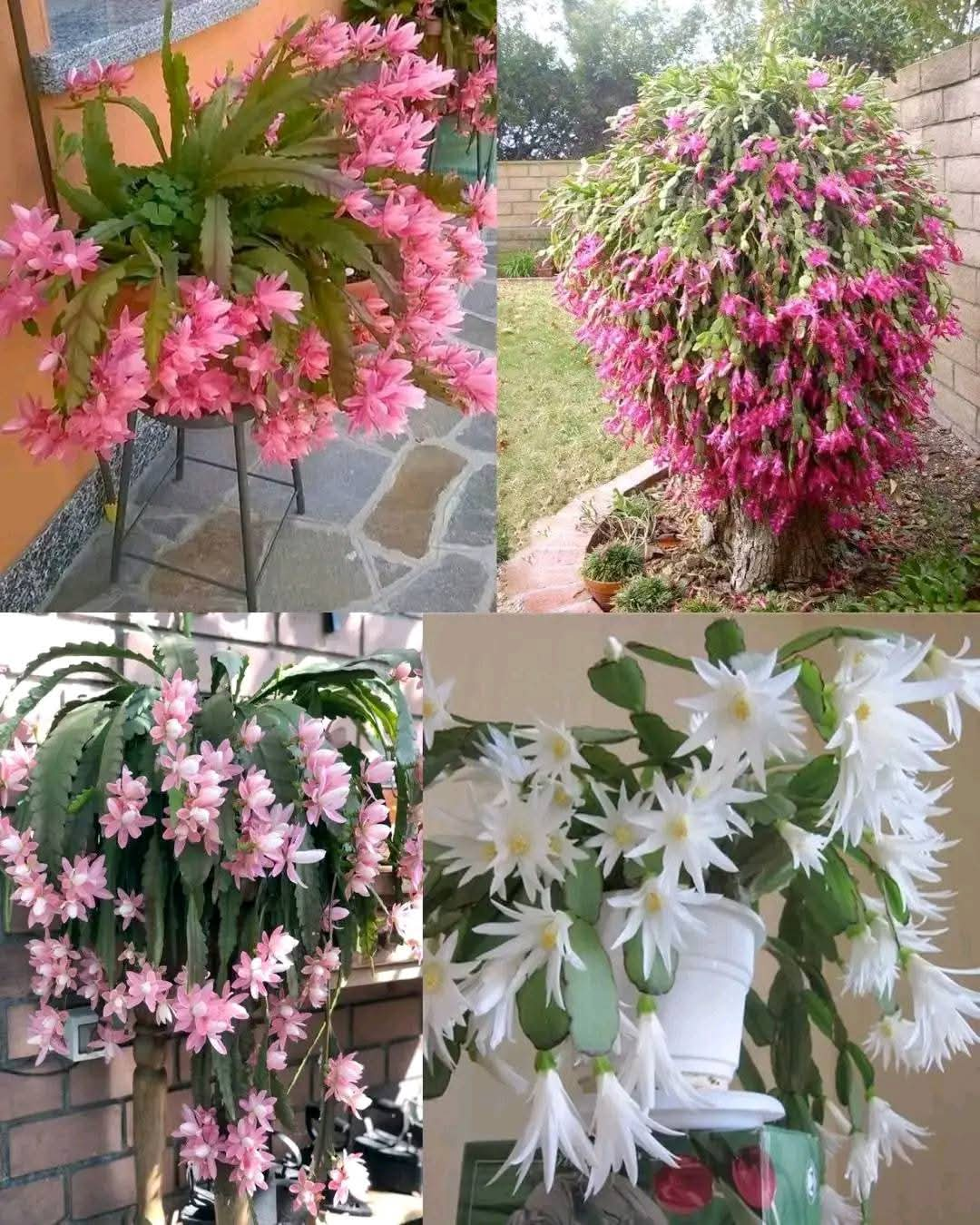Achieving year-round blooms from your Christmas cactus (Schlumbergera) is possible with a blend of care, environmental adjustments, and strategic timing. Here’s a step-by-step guide to help your cactus thrive and flower multiple times a year.
- Identifying Varieties
Understanding the type of holiday cactus you have is key:
Thanksgiving Cactus (Schlumbergera truncata): Blooms in late November. Has pointed, claw-like segments.
Christmas Cactus (Schlumbergera bridgesii): Blooms in December. Features rounded leaf segments.
Easter Cactus (Rhipsalidopsis): Blooms in spring. Has more symmetrical, scalloped segments.
Each type has unique bloom cycles, so knowing your variety helps tailor care for year-round flowering.
- Optimal Environment
Light: Provide bright, indirect sunlight for healthy growth. Avoid direct sun, which can scorch leaves.
Temperature: Maintain temperatures between 60-75°F (15-24°C). Bring your cactus indoors if temperatures drop below 50°F (10°C).
Consistency: Avoid moving the plant frequently, as changes in location or light intensity can disrupt blooming.
- Watering and Humidity
Watering:
Water thoroughly when the top inch of soil feels dry.
Allow excess water to drain completely to prevent root rot.
Humidity:
Christmas cacti prefer moderate humidity.
Increase humidity by placing a tray filled with water and pebbles near the plant or misting it occasionally.
- Nutrition and Repotting
Fertilizing:
During blooming: Fertilize monthly with a balanced, water-soluble fertilizer.
After blooming: Switch to bi-weekly feeding with a diluted fertilizer to promote recovery and new growth.
Repotting:
Only repot when the plant becomes root-bound (every 2-3 years).
Use a slightly larger pot with well-draining soil, such as a cactus mix or a blend of potting soil, perlite, and peat.
- Inducing Blooms
To trigger blooms multiple times a year, mimic the plant’s natural environmental cues:
- Dark Period:
Provide 12-14 hours of darkness daily for about four weeks.
Place the plant in a dark, cool room or cover it with a light-proof cloth.
- Cool Temperatures:
Keep temperatures between 50-55°F (10-13°C) during the dark period.
- Light Exposure:
After the dark phase, return the plant to bright, indirect light to encourage blooming.
Repeat this process after each bloom cycle for additional flowering.
- Propagation
After Blooming: Once flowering is complete, prune the plant and propagate cuttings.
How to Propagate:
Take cuttings of 2-3 leaf segments.
Let the cuttings dry for 24 hours to form a callus.
Plant in well-draining soil and keep the medium slightly moist.
Place in bright, indirect light to encourage rooting.
Additional Tips for Continuous Blooms
Stress for Success: Controlled stress (cooler temps and darkness) encourages blooming.
Avoid Overwatering: Root rot is a common cause of poor blooming. Always allow the soil to dry slightly before watering.
Prune Strategically: After blooming, trim leggy stems to encourage a bushier, healthier plant.
Rotate Plant: Turn the plant occasionally to ensure even growth and light exposure.
By following these steps, your Christmas cactus can become a reliable source of vibrant, festive blooms multiple times a year. It’s a rewarding process that brings beauty and joy to your indoor space year-round.
